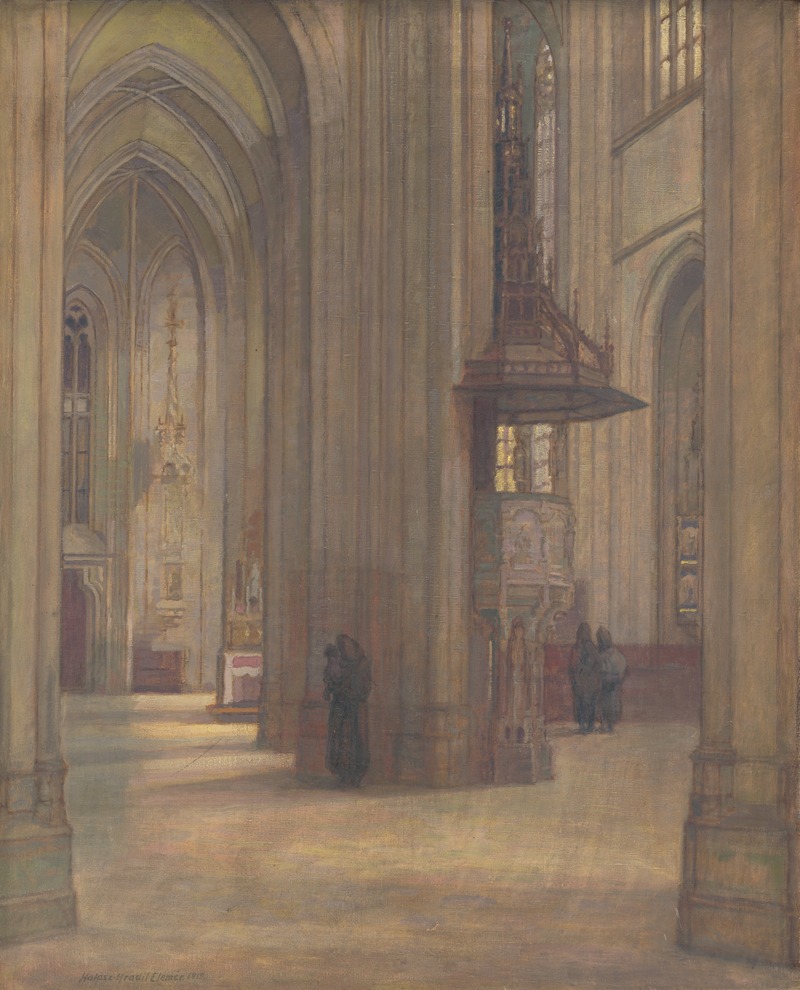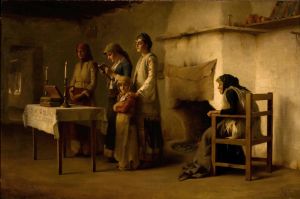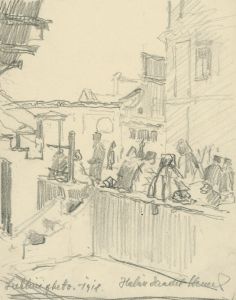
Interior of St. Elisabeth Cathedral
A hand-painted replica of Elemír Halász-Hradil’s masterpiece Interior of St. Elisabeth Cathedral, meticulously crafted by professional artists to capture the true essence of the original. Each piece is created with museum-quality canvas and rare mineral pigments, carefully painted by experienced artists with delicate brushstrokes and rich, layered colors to perfectly recreate the texture of the original artwork. Unlike machine-printed reproductions, this hand-painted version brings the painting to life, infused with the artist’s emotions and skill in every stroke. Whether for personal collection or home decoration, it instantly elevates the artistic atmosphere of any space.
Elemír Halász-Hradil was a notable Slovak painter, born in 1873 in the town of Košice, which was part of the Austro-Hungarian Empire at the time. He is recognized for his contributions to Slovak art, particularly in the late 19th and early 20th centuries. Halász-Hradil's works often reflect his interest in capturing the essence of Slovak culture and architecture, and he is known for his detailed and evocative depictions of interiors and landscapes.
One of his significant works is "Interior of St. Elisabeth Cathedral," which showcases his skill in rendering architectural spaces with precision and artistic sensitivity. St. Elisabeth Cathedral, located in Košice, is a Gothic cathedral and the largest church in Slovakia. It is dedicated to Saint Elisabeth of Hungary and is a prominent example of Gothic architecture in Central Europe. The cathedral's construction began in the late 14th century and continued for several centuries, resulting in a structure that combines various architectural styles and influences.
Halász-Hradil's painting of the cathedral's interior captures the intricate details and the grandeur of this historic building. The artwork likely emphasizes the play of light and shadow within the cathedral, highlighting the architectural features such as the ribbed vaults, pointed arches, and the ornate decorations that are characteristic of Gothic design. Through his painting, Halász-Hradil provides a glimpse into the spiritual and historical significance of the cathedral, which has been a central place of worship and a symbol of cultural heritage in Košice for centuries.
The artist's attention to detail and his ability to convey the atmosphere of the cathedral's interior make this painting a valuable piece of art that contributes to the appreciation of Slovakia's architectural history. Halász-Hradil's work is part of a broader tradition of European artists who have sought to document and celebrate the architectural achievements of their regions through painting.
While specific details about the creation date or the current location of "Interior of St. Elisabeth Cathedral" are not readily available, Halász-Hradil's body of work continues to be appreciated for its artistic merit and historical significance. His paintings are often studied for their technical skill and their role in preserving the visual history of Slovak cultural landmarks.
Elemír Halász-Hradil passed away in 1948, but his legacy endures through his contributions to Slovak art and his depictions of the country's architectural treasures. His work remains an important part of Slovakia's cultural heritage, offering insights into the artistic and historical context of his time.

















